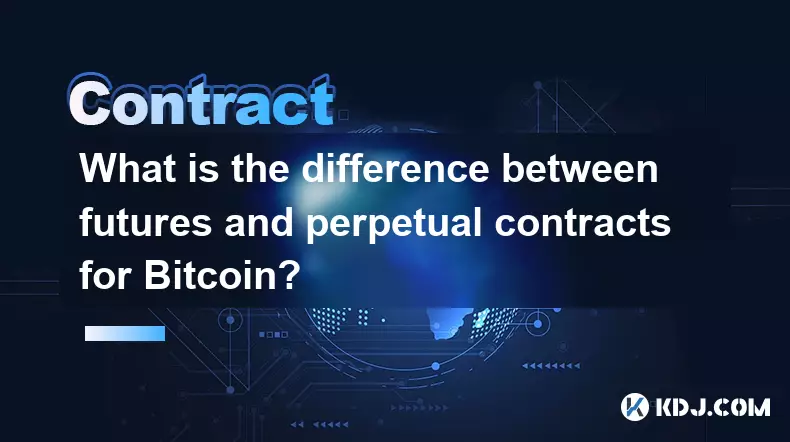-
 bitcoin
bitcoin $122288.232522 USD
0.16% -
 ethereum
ethereum $4480.662914 USD
-0.22% -
 xrp
xrp $2.962747 USD
-2.32% -
 tether
tether $1.000120 USD
-0.05% -
 bnb
bnb $1145.654223 USD
-2.07% -
 solana
solana $227.105217 USD
-1.67% -
 usd-coin
usd-coin $0.999548 USD
-0.02% -
 dogecoin
dogecoin $0.250875 USD
-2.04% -
 tron
tron $0.340654 USD
-0.49% -
 cardano
cardano $0.837968 USD
-2.52% -
 hyperliquid
hyperliquid $48.960449 USD
0.06% -
 chainlink
chainlink $22.049280 USD
-1.33% -
 ethena-usde
ethena-usde $1.000404 USD
0.02% -
 sui
sui $3.586212 USD
0.20% -
 avalanche
avalanche $29.894916 USD
-4.18%
Bybit contract how to play tutorial
Bybit's contract platform empowers traders with perpetual contracts, allowing them to leverage the price movements of underlying cryptocurrencies without physical delivery, amplifying both potential profits and losses.
Nov 07, 2024 at 06:05 am

Bybit Contract: A Comprehensive Guide to Leveraged Trading
IntroductionBybit is a leading cryptocurrency exchange known for its innovative features, including its perpetual contract trading platform. This guide will provide a detailed tutorial on how to navigate and trade on Bybit's contract platform, empowering traders of all levels to leverage this powerful tool effectively.
Step 1: Understanding Contract TradingContract trading involves using financial instruments known as contracts to trade the underlying asset's price movement without physical delivery. Bybit offers perpetual contracts, which means they do not have an expiry date, allowing traders to hold positions for as long as desired. The use of leverage in contract trading amplifies both potential profits and losses, making it crucial to understand the risks involved.
Step 2: Registering on Bybit and Funding Your AccountTo access Bybit's contract trading platform, you must first register an account. The registration process is straightforward and requires basic personal information. Once your account is created, you need to deposit funds to start trading. Bybit supports a wide range of deposit options, including cryptocurrencies and fiat currencies.
Step 3: Navigating the Bybit Contract PlatformThe Bybit contract platform offers a user-friendly interface designed to streamline the trading experience. The main page displays the available contract markets, each representing a different cryptocurrency asset. Traders can choose from a variety of contract sizes and leverage levels, depending on their risk appetite and trading strategy.
Step 4: Placing an OrderBybit provides two primary order types for contract trading: limit orders and market orders. Limit orders allow you to specify the desired execution price, while market orders execute at the current market price. To place an order, simply select the desired contract, input the order details (including quantity and price for limit orders), and click the "Buy/Sell" button.
Step 5: Managing Your PositionOnce an order is executed, it creates an open position in your account, representing your exposure to the underlying asset. Bybit offers a range of tools to manage your position effectively, including stop orders and take-profit orders. These orders allow you to automate trade execution based on pre-defined price levels, ensuring your risk and profit targets are met.
Step 6: Closing a PositionTo close a position, simply place an order in the opposite direction. For instance, if you have an open long position, you would close it by placing a sell order. Bybit allows you to close partial positions, giving you the flexibility to adjust your exposure gradually.
Best Practices for Contract Trading- Risk Management: Contract trading involves high leverage, which can magnify both profits and losses. Always implement a robust risk management strategy to mitigate potential risks, such as using stop-loss orders and position sizing.
- Technical Analysis: Technical analysis can provide valuable insights into market trends and potential trading opportunities. By utilizing technical indicators, traders can make more informed decisions about market entry and exit points.
- Fundamental Analysis: Staying updated on market news and fundamental factors that affect cryptocurrency prices can help traders gauge market sentiment and identify potential trading opportunities.
- Money Management: Proper money management is crucial for long-term trading success. Establish a trading capital commensurate with your risk tolerance and stick to it to avoid over-trading and excessive losses.
- Continued Learning: The cryptocurrency market is constantly evolving, and successful traders continuously seek to refine their knowledge and skills. Engage in ongoing learning resources, such as reading market updates, attending webinars, and experimenting with different trading strategies.
Disclaimer:info@kdj.com
The information provided is not trading advice. kdj.com does not assume any responsibility for any investments made based on the information provided in this article. Cryptocurrencies are highly volatile and it is highly recommended that you invest with caution after thorough research!
If you believe that the content used on this website infringes your copyright, please contact us immediately (info@kdj.com) and we will delete it promptly.
- BlockDAG, DOGE, HYPE Sponsorship: Crypto Trends Shaping 2025
- 2025-10-01 00:25:13
- Deutsche Börse and Circle: A StableCoin Adoption Powerhouse in Europe
- 2025-10-01 00:25:13
- BlockDAG's Presale Buzz: Is It the Crypto to Watch in October 2025?
- 2025-10-01 00:30:13
- Bitcoin, Crypto, and IQ: When Genius Meets Digital Gold?
- 2025-10-01 00:30:13
- Stablecoins, American Innovation, and Wallet Tokens: The Next Frontier
- 2025-10-01 00:35:12
- NBU, Coins, and Crypto in Ukraine: A New Yorker's Take
- 2025-10-01 00:45:14
Related knowledge

What is the difference between futures and perpetual contracts for Bitcoin?
Oct 02,2025 at 11:54pm
Understanding Bitcoin Futures Contracts1. Bitcoin futures are derivative instruments that allow traders to speculate on the future price of Bitcoin at...

What is the best time to trade PEPE contracts?
Oct 03,2025 at 11:54am
Understanding PEPE Contract Volatility1. PEPE contracts exhibit extreme price fluctuations due to their meme-based nature and low market cap. Trading ...

What are the common mistakes to avoid with Bitcoincoin contracts?
Oct 03,2025 at 08:54am
Emerging Trends in the Cryptocurrency Market1. Decentralized finance (DeFi) platforms continue to expand their influence across the blockchain ecosyst...

What is the maintenance margin for Bitcoin contracts?
Oct 02,2025 at 01:36am
Decentralized Exchanges Gain Momentum in 20241. Decentralized exchanges (DEXs) have seen a significant rise in trading volume, surpassing centralized ...

How to use technical analysis for trading XRP contracts?
Oct 03,2025 at 01:18pm
Understanding Price Patterns in XRP Futures1. Identifying chart patterns such as triangles, head and shoulders, and double tops or bottoms can provide...

What does "longing" PEPE contracts mean?
Oct 03,2025 at 11:54pm
Understanding Decentralized Exchanges in the Crypto Ecosystem1. Decentralized exchanges (DEXs) operate without a central authority, allowing users to ...

What is the difference between futures and perpetual contracts for Bitcoin?
Oct 02,2025 at 11:54pm
Understanding Bitcoin Futures Contracts1. Bitcoin futures are derivative instruments that allow traders to speculate on the future price of Bitcoin at...

What is the best time to trade PEPE contracts?
Oct 03,2025 at 11:54am
Understanding PEPE Contract Volatility1. PEPE contracts exhibit extreme price fluctuations due to their meme-based nature and low market cap. Trading ...

What are the common mistakes to avoid with Bitcoincoin contracts?
Oct 03,2025 at 08:54am
Emerging Trends in the Cryptocurrency Market1. Decentralized finance (DeFi) platforms continue to expand their influence across the blockchain ecosyst...

What is the maintenance margin for Bitcoin contracts?
Oct 02,2025 at 01:36am
Decentralized Exchanges Gain Momentum in 20241. Decentralized exchanges (DEXs) have seen a significant rise in trading volume, surpassing centralized ...

How to use technical analysis for trading XRP contracts?
Oct 03,2025 at 01:18pm
Understanding Price Patterns in XRP Futures1. Identifying chart patterns such as triangles, head and shoulders, and double tops or bottoms can provide...

What does "longing" PEPE contracts mean?
Oct 03,2025 at 11:54pm
Understanding Decentralized Exchanges in the Crypto Ecosystem1. Decentralized exchanges (DEXs) operate without a central authority, allowing users to ...
See all articles










































































